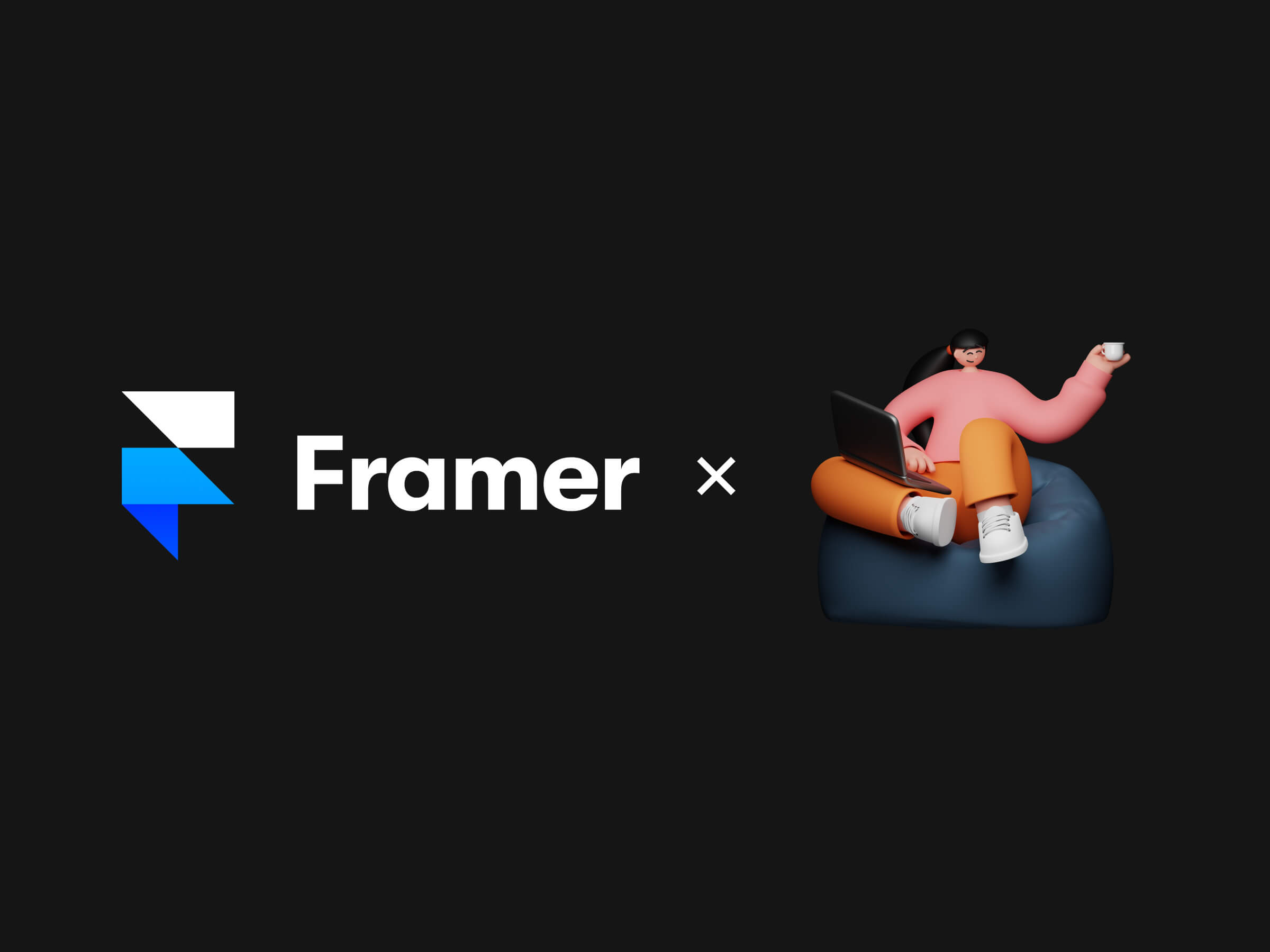In today’s digital landscape, building a standout website is crucial for personal brands, creative businesses, and companies of all sizes. Framer and Webflow are two popular platforms that offer powerful tools for creating professional, visually appealing websites—without needing extensive coding skills. But which one is right for you? In this article, we’ll dive into the differences, strengths, and use cases of Framer and Webflow to help you decide.
What is Framer?
Originally known as a prototyping tool, Framer has evolved into a robust web design and development platform, especially popular among designers who value ease of use and aesthetic precision. Framer allows users to create interactive, animated, and fully responsive websites that cater to high-quality visuals and streamlined interfaces. It’s particularly favored by designers looking to create eye-catching, interactive portfolio sites and landing pages.
What is Webflow?
Webflow, on the other hand, is a comprehensive web design tool that combines a visual editor with CMS capabilities. It allows designers to build responsive websites, e-commerce stores, and content-heavy sites with custom animations and interactions, all without coding. Webflow’s strength lies in its flexibility and extensive design customization, making it a top choice for users who need more control over every element of their website.
Key features comparison: Framer vs. Webflow
Ease of use
Framer’s intuitive drag-and-drop interface makes it very accessible, especially for designers and creatives. It’s designed to help users get up and running quickly, making it ideal for building clean, beautiful websites with minimal hassle.
While Webflow offers a powerful drag-and-drop editor, its advanced functionality requires a steeper learning curve, particularly for beginners.
Design flexibility
Framer shines with its built-in animations and interactive components. It’s perfect for visually driven sites where creativity and style are essential, such as portfolios or personal branding pages.
Webflow provides complete control over design, allowing users to fine-tune elements to their exact specifications. With CSS Grid, Flexbox, and custom code embedding, Webflow offers unparalleled flexibility for web designers.
Integrations and plugins
Framer supports integrations with tools like Google Search Console, Lottiefiles, and Google Sheets, but has fewer built-in integrations compared to Webflow, because Framer has only just introduced Plugins. Within a short time Framer will have a bunch of new Plugins.
Webflow integrates with a vast number of third-party applications, including Stripe, Hubspot, and e-commerce systems, allowing for a highly customizable, connected experience.
Animation and interactivity
Framer’s animation capabilities are one of its biggest strengths. It allows designers to create smooth animations and interactive elements that are ideal for portfolios, landing pages, and creative projects.
Webflow also has a robust animation toolset, enabling users to create custom interactions and animations. However, achieving advanced animation effects may require more setup and a deeper understanding of the platform.
SEO & marketing tools
When it comes to SEO, both Framer and Webflow offer solid tools, though Webflow provides more advanced options. Webflow allows easy setup for redirects, global canonical tags, and automatic sitemap generation, along with custom code sections for adding schema, pagination, and other SEO elements directly to the page. Webflow also writes clean code and offers options for code minification, helping to optimize site performance.
Framer, while slightly simpler, covers the essentials, allowing for redirects, metadata, canonicals, and sitemaps. It also includes GDPR-compliant analytics via GA4 for built-in tracking. However, Webflow’s range of integrations and apps like Data Goat give it an edge for those seeking in-depth SEO control. Ultimately, both platforms benefit from applying strong SEO practices during and after design, but Webflow is better suited for advanced technical SEO needs.
Pricing
In terms of pricing, Framer generally offers a more affordable range, with a free plan for basic sites and budget-friendly paid plans suitable for individuals and small businesses. This makes Framer ideal for designers and creatives who want a professional site without high costs.
Webflow, however, is priced higher and unlocks its more advanced features, such as CMS capabilities and e-commerce tools, in the higher-tier plans. While it has a free plan, the paid tiers are better suited for businesses needing complex design functionality, larger content management needs, or more customization. Overall, Framer’s pricing is budget-friendly for simpler sites, while Webflow’s pricing reflects its versatility and extensive features for larger projects.
Best for specific use cases
Portfolios & creative websites: If you’re a designer, artist, or creative professional, Framer is a fantastic choice. Its ease of use, clean design templates, and interactive capabilities make it ideal for building visually compelling portfolios.
Content-heavy & E-commerce sites: For businesses needing a content management system or a fully-featured e-commerce platform, Webflow is the better option.
Animation-heavy sites: Both platforms support animations, but if ease of animation setup is a priority, Framer might have a slight edge. Webflow, however, is ideal for users looking for more control over animation triggers and sequencing.
Final thoughts: Framer vs. Webflow
Both Framer and Webflow are powerful tools, but they cater to slightly different needs:
Choose Framer if you’re looking for simplicity, beautiful design, and an easy way to showcase creative work without a steep learning curve.
Choose Webflow if you want more advanced options, need more powerful CMS capabilities, or are building an large e-commerce website.
Both platforms are valuable additions to the world of web design, and ultimately, the choice depends on your project requirements, budget, and comfort level with learning new design tools.
By comparing Framer and Webflow, you can determine the best fit to bring your vision to life—whether it’s a stunning portfolio, a business website, or a fully functioning online store.






